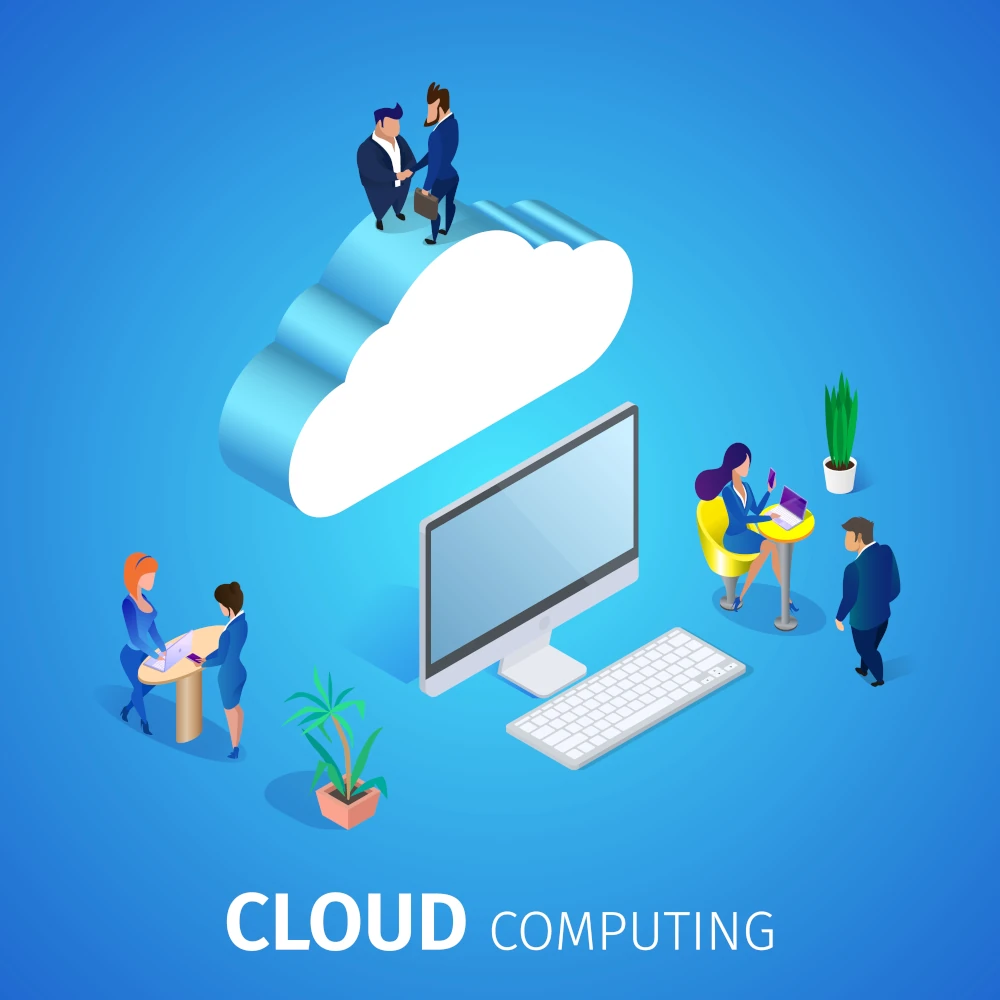
From storing data on floppy disks to hosting data on clouds, technology has undoubtedly come a long way. So, what is cloud computing?
Simply put, cloud computing is a method of delivering computer programs, software storage and numerous other IT resources through a virtual cloud platform connected to the internet. Using this technology, users can access their applications from wherever they are as a remote, third-party server hosts their programs. So, with cloud computing, users no longer need to be concerned about storage, sharing and managing resources. Companies or individual users can merely rent access from popular third-party cloud service providers like Microsoft Azure, Amazon Web Services (AWS), and Google Cloud Platform (GCP).
To read more about cloud computing, check out
AWS vs Microsoft Azure vs Google Cloud Platform
1. Why is it Called Cloud Computing?
In cloud computing, the user is less concerned with the details of the operation, such as where the applications are stored, or on which hardware they are running. That is because data is stored on remote servers which users cannot access, an idea which is similar to an actual cloud. It was this concept of a ‘cloud’ that resulted in old telecom networks, and then the internet to represent the underlying system schematics with a cloud to demonstrate that the functionality of such a system is irrelevant to the user. Hence the term ‘cloud computing’.
2. The Two Main Types of Cloud Platforms
A variety of cloud platforms are available, depending on the IT needs of the company or individual user. The two most commonly used versions of clouds are Infrastructure-as-a-Service (IaaS) and Software-as-a-Service (SaaS).
In IaaS, the cloud service provider is responsible for hosting and managing the virtual machines, storage, networking applications and physical servers. The user is only responsible for maintaining the operating system.
In SaaS, the cloud platform provider hosts the applications, services and relevant data, without being concerned with the underlying hardware. Users can access the resources via a Web browser.
3. The Market Size for Cloud Computing
According to a 2017 Forbes report, the global market for cloud computing is projected to reach $411B by 2020. SaaS revenue is expected to increase to $58.6B by the end of 2017, growing by a remarkable 21%. Infrastructure as a Service (IaaS) is predicted to grow by an astonishing 36.6% in just 2017, increasing its revenue to $34.7B.

4. Why Cloud Computing is Gaining Tremendous Popularity
Cloud computing has lowered IT-related expenditure significantly. Since remote third-party cloud service providers are now storing resources on their shared servers, the need for investing in private company servers is eliminated. Moreover, the cost of software licensing is cut down, as cloud computing allows its users to pay a minimal fee for sharing software. Cloud computing is also increasing work efficiency by saving on time as resources can be accessed from anywhere, at any time. It also eradicates the need to backup data and keeps it safe even if viruses attack your computer, the data remains secure in the cloud.
5. Hybrid Clouds are the Most Popular
There are two main types of clouds: Private and Public. A private cloud hosting solution, also known as an internal or enterprise cloud, sits on a company’s intranet or private hosted data centre, shielded by a firewall.
A public cloud strategy employs the cloud providers’ public servers and storage, which may or may not be protected behind a firewall. Using at least one private and one public cloud is called a hybrid cloud system.
According to RightScale’s 2018 State of the Cloud Survey, 96% of respondents stated that they were implementing the cloud. Out of these respondents, 71% are using the hybrid cloud, 21% are using a public cloud, and only 4% are using a private cloud.
6. Cloud Computing has Proven to be Secure
Putting all your data in a virtual cloud does seem very risky and unsafe, especially on a public cloud. However, many CIO’s have disclosed that cloud service providers keep updating their security measures and anti-malware systems more often than their staff might have. Users must also ensure that their data is being held securely, and only upload their data on trusted cloud providers’ servers. Ultimately, a company’s security of information is its responsibility.
7. Cloud Computing Terminologies
As cloud computing gains popularity, it is essential to be aware of some familiar cloud computing terminologies:
- Cloud Bursting: When the requirement for computing storage increases, an application running in a private cloud “bursts” or shifts any excess to a public cloud. It is known as “cloud bursting.”
- Network Function Virtualisation (NFV): The Virtualisation of entire classes of network node functions into standardised building blocks that may be chained together to create interactive services.
- Software-Defined Networking (SDN): Allows network administrators to manage and provide network services through software-based networking and automation.
- Software-Defined Storage (SDS): A software-defined, extremely scalable storage environment that delivers computerised tiers and media management on high volume servers.
- Software-Defined Infrastructure (SDI): This enables a fully coordinated and abstracted environment where applications define the systems through sharing resources, provisioning management, and guaranteeing service.
Conclusion
Cloud computing is taking the IT industry by storm, revolutionising the way companies manage data and applications. With its rising popularity and usefulness, the number of cloud service providers is increasing, creating further competition in the market, which will inevitably increase in the future as the user base expands.
Cloud computing is undoubtedly the future of data management.


